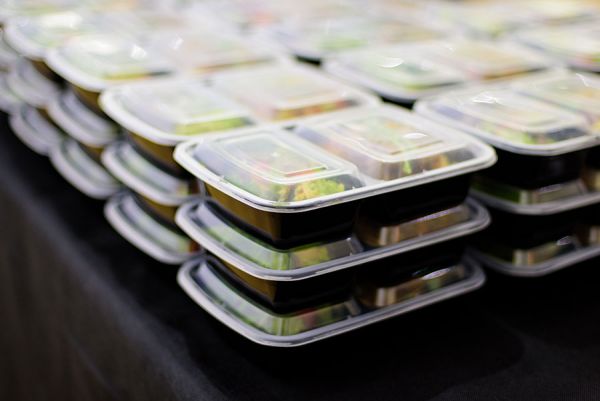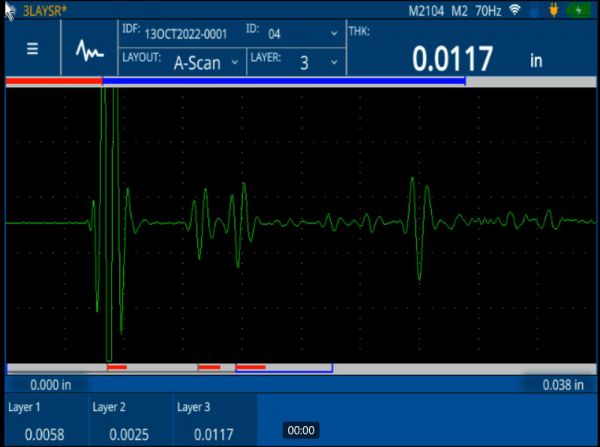
This application note will explain how to measure individual layers and total thickness in multilayer plastic food and beverage containers.
The Layers in Plastic Food and Beverage Containers
Many containers for packaged food products and many carbonated beverage bottles contain a gas barrier layer between two layers of structural plastic such as polyvinyl chloride, polycarbonate, or polyethylene.
The thin barrier layer, usually made of ethylene vinyl alcohol (EVOH), polyvinylidene chloride (PVDC), polyester, acrylic copolymer, or a similar material, is designed to preserve freshness and lengthen shelf life by preventing the migration of gas in or out of the package. For example, this layer can keep oxygen out of a frozen food package or keep carbon dioxide inside a beer bottle.
Ultrasonic Equipment Used to Measure Multilayer Plastic Food and Beverage Containers
The 39DL PLUS™ ultrasonic thickness gauge with the multilayer software option can be used for applications where the thickness of each layer is above 0.004 in. (0.102 mm). For applications where the layers are thinner, it is generally necessary to make this measurement with a high-frequency instrument such as the 72DL PLUS™ ultrasonic thickness gauge that can drive frequencies up to 125 MHz.
The minimum measurable thicknesses will always depend on the acoustic properties of specific materials, but barrier layers down 0.001 in. (0.025 mm) in thin-wall containers can often be measured with this type of system. High-frequency delay line transducers in the range of 50 MHz to 125 MHz are typically recommended for this type of test.
Typical Procedure to Measure a Multilayer Plastic Container
The sample waveform below shows a 50 MHz measurement of a three-layer plastic container comprising a 0.0058 in. (0.147 mm) outer structural layer, a 0.0025 in. (0.064 mm) barrier layer, and a 0. 0117 in. (0.297 mm) inner structural layer. This test was performed using a 50 MHz V2015-BB-RM transducer and the 72DL PLUS gauge.

50 MHz measurement of a three-layer plastic container performed on the 72DL PLUS ultrasonic thickness gauge
The minimum measurable thickness in a given application will be determined by the highest frequency that is transmitted by the plastic in question. Some plastics are highly attenuating to high-frequency sound waves. Thus, very thin barriers embedded in thick structural plastic may not be measurable because of low pass filtering effects. For a given product, the measurable thickness range will typically be determined by experimentation with representative samples.
The reflection ratio at the boundary between any two materials is determined by the relative acoustic impedances of those materials. Because virgin and regrind plastics of a given type have essentially identical acoustic impedances, it is impossible to separately measure regrind layers. Also, adhesive layers adjacent to barrier layers are generally too thin and/or too closely impedance matched to measure with ultrasonic techniques and usually cannot be resolved.
As with any ultrasonic thickness measurement, accuracy is dependent on proper sound velocity calibration. Velocity calibration must be performed for each material being measured, on samples of known thickness.


